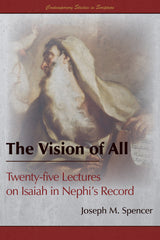News
Newell G. Bringhurst Speaking Events April 13 2018

| Date & Time | Location |
| Tue April 24 at 5:30 PM | Benchmark Books, SLC |
| Thur April 26 at 7:00 PM | Writ & Vision, Provo |
| Fri April 27 at 5:00 PM | Main Street Books, Cedar City |
| Sat April 28 at 4:00 PM | Home of Doug Bowen, St. George |

NOW AVAILABLE
“An excellent treatment of an important part of American religious life. Bringhurst succeeds in showing the Mormons as a microcosm of the American population.” — The American Historical Review
“In many regards Bringhurst established the terms on which subsequent scholars would engage race and Mormonism” — W. Paul Reeve, author of Religion of a Different Color: Race and the Mormon Struggle for Whiteness
Sign up for our newsletter to stay informed
about future events and book releases
Five Times Mormons Changed Their Position on Slavery March 28 2018

Mormonism and Black Slavery:
Changing Attitudes and Related Practices, 1830–1865
By Newell G. Bringhurst
Mormon attitudes and practices relative to black slavery shifted over the course of the first thirty-five years of the Latter-day Saint movement, evolving through five distinct phases.
Phase 1 – Opposition to Slavery in the Book of Mormon
Initially Joseph Smith expressed strong opposition to slavery through the pages of the Book of Mormon. While not specifically referring to black people, Mormonism’s foundational work asserted that “it was against [Nephite] law” to enslave those less favored than themselves, namely the dark Lamanites (Alma 27:9; Mosiah 2:13). In fact, the idolatrous Lamanites were the ones who practiced slavery, making repeated efforts to enslave the light-skinned, chosen Nephites. Lamanite slaveholding was cited as proof of this people’s “ferocious and wicked nature” (Alma 50:22). Nephite resistance to the Lamanites was described as a struggle for freedom from bondage and slavery.
Phase 2 –Detachment towards Slavery in Ohio and Missouri
Mormon attitudes toward slavery entered a second phase of deliberate detachment following the formal organization of the Church in 1830. Through the pages of the Church’s official newspaper, the Evening and Morning Star, Joseph Smith and others avoided discussion of this increasingly controversial topic. No mention was made of Book of Mormon verses condemning slavery. A major reason for such deliberate detachment was the establishment of Mormonism’s Zion in Missouri, a slave state. Church officials sought to disassociate themselves from the fledgling Abolitionist movement.
Despite this, the Church found itself compelled to speak out on the issue on two important occasions. The first involved Joseph Smith’s “Revelation and Prophecy on War” brought forth on 25 December 1832 and ultimately canonized as Section 87 in the Doctrine and Covenants. In this apocalyptic document, Smith prophesized that “wars…will shortly come to pass, beginning at the rebellion of South Carolina [and]…poured out on all nations” (D&C 87:1–2). It further declared that the “slaves will rise up against their masters, who shall be marshalled and disciplined for war” (D&C 87:4). Given its explosive implications, this revelation was not disclosed to the general Church membership until two decades later.
By contrast, a second Mormon statement, “Free People of Color” written by W. W. Phelps and published in the July 1833 issue of the Evening and Morning Star, received immediate exposure resulting in dire consequences. Prompting Phelps’s statement was a dramatic four-fold increase in the number of Mormons settling in Jackson County. The article’s stated purpose was “to prevent any misunderstanding . . . respecting free people of color, who may think of coming to . . . Missouri as members of the Church.”[1] However, it had the opposite effect, angering local non-Mormons who expelled the Latter-day Saints from Jackson County.
Phase 3 – Pro-slavery Sympathies in Missouri
By the mid 1830s, Church attitudes toward slavery shifted yet a third time, Church spokesmen affirming support for slavery. In August 1835, the Church issued an official declaration stating that it was not “right to interfere with bond-servants, nor baptize them contrary to the will and wish of their masters” nor cause “them to be dissatisfied with their situations in this life.” Ultimately this statement was incorporated into the Doctrine and Covenants as Section 134. Eight months later, in April 1836, Joseph Smith reaffirmed Mormon pro-slavery sympathies through a lengthy discourse published in the official Latter-day Saints Messenger and Advocate. Smith raised the specter of “racial miscegenation and possible race war” if abolitionism prevailed.[2] He further stated that the people of the North have no “more right to say that the South shall not hold slaves, than the South have to say the North shall.”[3] He referenced the Old Testament, specifically the “decree of Jehovah” that blacks were cursed with servitude.[4] Other church spokesmen echoed Smith’s sentiments, in particular Oliver Cowdery and Warren Parrish. This Mormon shift reflected an increased Mormon presence in the slave state of Missouri during the late 1830s, along with a desire to carry the Mormon message to potential converts in the slaveholding South. But most importantly, it represented strong Mormon reaction against the establishment of a chapter of the American Anti-slavery society in the Mormon community of Kirtland Ohio.
Phase 4 – Anti-slavery Position in Nauvoo
By the early 1840s Smith and his followers shifted their position yet a fourth time, assuming a strong anti-slavery position, most evident during the Mormon leader’s 1844 campaign for U.S. president. In his “Views on the Powers and Policy of the Government of the United States” Smith advocated the abolition of slavery through gradual emancipation and colonization of the freed blacks abroad.[5] He called for the “break down [of] slavery” and removal of “the shackles from the poor black man” through a program of compensated emancipation financed through the sale of public lands.[6] Smith predicted that his proposal could eliminate slavery by 1850. Motivating this changing position were two major factors: one was the Mormon’s forced expulsion from the slave state of Missouri in 1838-39. The second involved demographics, namely the fact that the majority of church members hailed from non-slaveholding regions north of the Mason-Dixon line and from Great Britain. By contrast, a relatively limited number of new converts were drawn from the slaveholding South.
Phase 5 – Pro-slavery Position in Utah Territory
Mormon attitudes and related practices relative to slavery shifted yet a fifth and final time following the death of Joseph Smith in 1844 with the emergence of Brigham Young as the principal leader of the Latter-day Saints who migrated west. Young’s evolving position represented “a bundle of contradictions.”[7] Initially, he advocated a “free soil”[8] stance in a June, 1851, sermon, rhetorically stating, “shall we lay a foundation for Negro slavery? No, God forbid!”[9] Six months later in the wake of his appointment as Utah Territorial Governor, Young retreated from this position. Despite his assertion that “my own feelings are that no property can or should exist in slaves,” Young called on the territorial legislature adopt a form of benevolent indentured servitude to regulate Utah’s small but visible black population.[10] Two weeks later, addressing that same body, he proclaimed himself “a firm believer in slavery,”[11] urging legalization of the Peculiar Institution.[12] On February 4, 1952, the Utah Territorial Legislature passed “An Act in Relation to Service” which Young signed into law, making Utah the only Western territory to allow black slavery. Justifying his action, Young delivered a lengthy discourse in which he promoted a direct link between black slavery and black priesthood denial—the latter practice which he announced publicly for the first time. He further asserted that the two proscriptions were both intertwined and divinely sanctioned.
Four factors prompted Young to promote “An Act in Relation to Service.” First, the measure represented a response to the presence of sixty to seventy black slaves in the territory belonging to twelve Mormon slave owners. Among the most prominent were Apostle Charles C. Rich, William H. Hooper (an important Mormon merchant who served as Utah’s Territorial delegate to Congress), and Abraham O. Smoot, Salt Lake City’s first mayor. Second, Young hoped to secure southern support for Utah statehood. Young noted that there were “many [brethren] in the South with a great amount [invested] in slaves” who might migrate to the Great Basin if their slavery property were protected by law.[13]
Of crucial importance in motivating the Mormon leader was a third factor: his strong, unyielding belief that blacks were inherently inferior to whites in all respects and thus naturally fit for involuntary servitude. He accepted, uncritically, the traditional biblical genealogy that present-day Africans came through the so-called accursed lineage of Canaan and Ham back to Cain, thereby providing divine sanction to their servile condition. Further legitimizing black inferiority was the denial of priesthood ordination to black males, which Young affirmed as “a true eternal [principle] the Lord Almighty has ordained.” He stated: “If there never was a prophet or apostle of Jesus Christ spoke it before, I tell you, this people that are commonly called negroes are the children of old Cain, I know they are, I know that they cannot bear rule in the priesthood.”[14]
A fourth, seemingly counterintuitive factor activated Young: his desire to discourage slaveholding in the territory. A careful reading of the statute’s provisions indicates that it consisted primarily of rules to control and restrict slaveholders, and only, incidentally, proscriptions on black slaves themselves. For example, the act required Utah slaveholders to prove that servile blacks had entered the territory “of their own free will and choice.”[15] It also stated that slaveholders could not sell their slaves or remove them from the territory without the so-called servants explicit consent. In general, “An Act in Relation to Service” contrasted sharply with Southern slaveholding statutes in that it was more akin to the practice of indentured servitude. Later that same year, Young reflected on the act’s impact, claiming that it had “nearly freed the territory of the colored population.”[16] Ultimately, Utah Territorial slavery was completely outlawed through a federal statute enacted in 1862, affecting not just the Mormon-dominated region but all other federal territories as well.
Conclusion
The LDS Church’s ever shifting encounter with the institution of black slavery during the thirty-five years from 1830 to 1865 represents a complex, often contradictory odyssey. This perplexing journey profoundly affected Mormonism’s relationship with black people in general. While the number of blacks that Latter-day Saints actually held in bondage was miniscule, the fact that Brigham Young sanctioned the practice of black slavery in conjunction with his imposition of black priesthood and temple denial underscores slavery’s seminal impact on the now-defunct proscription on black people—such practice viewed as Church doctrine for over one hundred and twenty-five years.
 Saints, Slaves, and Blacks: The Changing Place of Black People Within Mormonism, 2nd ed.
Saints, Slaves, and Blacks: The Changing Place of Black People Within Mormonism, 2nd ed.
By Newell G. Bringhurst
Available April 10, 2018
Pre-order today
[1] Evening and Morning Star, July 1833.
[2] Joseph Smith, “Letter to the Editor,” Latter Day Saints Messenger and Advocate, April 1836
[3] Smith, “Letter to the Editor.”
[4] Smith, “Letter to the Editor.”
[6] Smith, “Views on the Powers and Policy of the Government of the United States.”
[12] Peculiar Institution is another term for Black Slavery.
[13] “Speech [sic] by Gov. Young in Counsel on a Bill relating to the Affican [sic] Slavery.”
[14] Brigham Young, Discourse, February 5, 1852, Bx 1 Fd. 17, Brigham Young Papers, LDS Church Historical Department.
[15] “AN ACT in relation to Service,” Acts, Resolutions and Memorials of the Legislative Assembly of the Territory of Utah (Salt Lake City, 1855), 160–62.
[16] Brigham Young, “Message to the Joint Session of the Legislature,” 13 December 1852, Brigham Young papers.
Q&A with Newell G. Bringhurst for Saints, Slaves, and Blacks, 2nd ed. March 14 2018

by Newell G. Bringhurst
Available April 10, 2018
Pre-order Your Copy Today
Q: When it was first published (1981), was Saints, Slaves and Blacks the first comprehensive book-length study published on the topic of race within Mormonism? Give us a timeline and little information behind your decision to write the book?
A: Yes, Saints, Slaves, and Blacks was the first comprehensive book-length study published on the topic of race within Mormonism. Although an earlier monograph, Stephen G. Taggart’s cursory Mormonism’s Negro Policy: Social and Historical Origins published in 1970, postulated that Joseph Smith implemented the black priesthood ban during the 1830s in response to Mormon difficulties in the slave state of Missouri. My own work which rejected Taggert’s limited “Missouri Thesis” is much more comprehensive. It took eleven years to complete, going through a two-stage process. The first stage involved producing a doctoral dissertation at the University of California, Davis, with the research and writing taking five years to complete, from 1970 to 1975. The second stage involved transforming the dissertation into a publishable book. This process involving further research and extensive re-writing that took another six years, from 1975 to 1981. Prompting my 1970 choice of this topic for a dissertation was the intense controversy surrounding the LDS Church’s priesthood and temple ban on black members, during the turbulent decade of the 1960s.
Q: What was the initial reception of Saints, Slaves, and Blacks when it was first published? Did its reception change over time?
A: Initial reception of the book can be best described as “mixed.” It attracted limited notice both within and outside the Mormon community. The Mormon Church’s owned-and-operated Deseret News completely ignored it, as did all other official LDS publications, including the academically-oriented BYU Studies. The book was the victim of bad timing given its publication a mere three years following the Church’s 1978 revelation that reversed the policy on race-based priesthood and temple restrictions. Mormons of all stripes were anxious to forget the now-embarrassing practice of black priesthood and temple denial, previously promoted as essential doctrine.
Reviews of the book were also mixed. On the negative side, one scholar, an active Latter-day Saint, who had written on black slavery in Utah, excoriated the volume for what he perceived as its “extreme anti-Mormon bias” claiming that it “continually [berated] Mormonism for blatant racism.” By contrast other Mormon academics offered a more measured response. Stanford J. Layton, then-editor of the Utah Historical Quarterly, praised the volume’s “heft and feel of scholarship …apparent on every page,” and a second, Lester E. Bush, Jr., who had written extensively on blacks within Mormonism, affirmed the validity of its central thesis—i.e. that the priesthood ban was the product of an emerging sense of Mormon “whiteness,” as contrast to the blackness assigned Cain, Ham, and other so-called Biblical counterfigures. Non-Mormon scholars also weighed in with generally positive evaluations pointing to the work’s “wealth of primary research,” and its “full discussion” of the “origins and development of Mormon racial doctrines.”
More recently other scholars who have written on race within Mormonism have affirmed the validity of the volume’s central thesis that the black ban emerged largely as the byproduct of an emerging sense of Mormon ethnic whiteness, wherein Latter-day Saints viewed themselves as a divinely chosen lineage—the literal descendants of the House of Israel, while proclaiming blacks a divinely cursed race given their alleged descent from accursed Biblical counterfigures—Cain, Ham, and Canaan.
Q: Briefly explain Mormon shifts in views on slavery from the time of the of the Saints sojourn in Missouri in the 1830s down to early 1850s in the wake Mormons’ migration to Utah or the Great Basin?
A: Latter-day Saint views on slavery dramatically shifted over the period from the 1830s to the early 1850s. Initial views on slavery as manifested through the pages of the Book of Mormon were in opposition, specifically asserting that “it was against [Nephite] law…” to hold slaves, while it was the dark, idolatrous Lamanites who practiced slavery.
From the formation of the Church in 1830 until 1844, Mormon attitudes toward slavery went through three distinct phases. Initially Joseph Smith and other Church leaders avoided any and all direct discussion of this increasingly controversial topic during the early 1830s. No mention was made of those Book of Mormon verses condemning slavery and/or human bondage. By the mid-1830s, however, the Church affirmed support for slavery in an official 1835 statement. Such change reflected an increased Mormon presence in the slave state of Missouri, a desire to carry the Mormon message to potential converts in the slaveholding South, and also by a desire to avoid identifying with the fledgling abolitionist movement.
By the early 1840s Smith and his followers shifted their position yet a fourth time, assuming a strong anti-slavery position, most evident during the Mormon leader’s abortive 1844 campaign for president. Motivating this change were two major factors. First was the Mormon’s forced expulsion from the slave state of Missouri in 1838–39. Second, the vast majority of church members hailed from non-slaveholding regions north of the Mason-Dixon line and from Great Britain, whereas a relatively limited number of new converts were drawn from the slaveholding South.
After 1844, Mormon attitudes toward slavery changed yet a fifth time, assuming a pro-slavery stance. Following the Mormon migration to the Great Basin, the Mormon-dominated Utah territorial legislature legalized the practice of black slavery, doing so at the direction of Brigham Young in 1852. Young’s rationale was driven by his belief in black racial inferiority, further reflected in his fateful decision to implement a ban of black priesthood ordination and temple ordinances.
Q: What were the primary reasons behind Brigham Young’s decision to impose the priesthood/temple restrictions on black Latter-day Saints?
A: Two major factors drove Brigham Young to implement the Church’s black ban by 1852. Most important was a developing sense of Mormon “whiteness,” wherein the Latter-day Saints identified themselves as divinely chosen people, reaffirmed by a belief that they were of Abrahamic descent, specifically the favored linage of Ephraim. Conversely these same Saints viewed blacks to be a divinely cursed race due to their alleged descent from the accursed Biblical counterfigures of Cain, Ham, and Canaan. The second factor motivating Young was his embrace of black slavery, which he considered divinely sanctioned. Thus, as Utah Territorial governor he called for its legalization—this occurring in 1852, thereby making Utah the only western territory to legalize black slavery. Furthermore, Young in calling for this statute claimed a divinely-sanctioned link between black servitude and black priesthood denial.
Despite the abolition of black slavery following the Civil War, the Church continued to deny its black members priesthood ordination and access to temple ordinances, such practice continuing until 1978. Several factors enabled Church leaders to both justify and perpetuate the practice. First, and perhaps most important, was acceptance of the historical myth that Joseph Smith was the actual author of the ban—such process starting immediately following the death of Brigham Young. Second was the use of the Pearl of Great Price as a scriptural proof text to justify the practice, specifically the crucial Book of Abraham verse suggesting that blacks were “cursed as pertaining to the priesthood.” A third factor was an increased sense of the Mormons’ ethnic self-identity as an “Israelite people” most favored by God. These same Saints further believed that they stood at the top of a divinely sanctioned ranking of all the lineages of humankind. Whereas blacks, as the accursed “seed of Cain,” stood at the bottom.
Q: What factors led to the rescinding of the priesthood/temple ban for black Mormons in 1978?
A: Several factors led to the lifting of the priesthood/temple ban in 1978. First of all, the ban was undermined by the Civil Rights movement, which gained momentum following World War II, reaching its peak in the late 1960s and early 1970s. Civil Rights activists assailed the ban in protests during the 1960s. A second factor involved the emergence of prominent critics within the Church who raised their voices in opposition to the ban. Particularly prominent were sociologist Lowry Nelson and Sterling M. McMurren, a University of Utah Professor and U. S. Commissioner of Education under John F. Kennedy. Thirdly, the increasingly offensive ban came under intense scrutiny thanks to the prominence of three Latter-day Saints as national political figures. They were Michigan Governor George Romney—a Republican Presidential contender in 1968, Stewart Udall, who served as Secretary of Interior from 1961 to 1969, and US Congressman Morris Udall, a major Democratic Presidential candidate in 1976.
Of primary importance in ending to the ban was a fourth development—the dramatic growth of Mormonism abroad, particularly in non-white regions of Asia, the South Pacific, and Latin America. The diversification of Mormonism’s racial ethnic composition undermined traditional Mormon white ethnocentric ideas and concepts used to justify the ban. The final push for change arrived with the emergence of Spencer W. Kimball as LDS Church President. Kimball was increasingly concerned about the Church’s limited ability to expand into those parts of the world with large non-white populations, most especially Brazil with its large bi-racial population and sub-Sahara Africa, overwhelmingly black. Thus, all the elements facilitating the lifting of the ban were in place by June 1978.
Q: How have Mormon attitudes on this topic changed over the past few years? How is this reflected in contemporary scholarship?
A: In recent years, Latter-day Saints of all stripes, from the Church’s top leaders all the way down to rank-and-file members have become increasingly willing to confront various aspects of Mormonism’s problematic racial past. The Church’s official “Race and the Priesthood” Gospel Topics essay issued in December 2013 reflects such openness. The essay ascribed the priesthood/temple ban to racism rather than divine revelation. It singles out Brigham Young as the primary author of the ban, motivated by the “racial discriminations and prejudice” of his day. The essay further repudiates the Church’s decades old teachings of divine curses placed on black people, and white racial superiority, and condemnation of interracial marriages.
Such openness has been further reflected in the flood of books and articles dealing with varied aspects of Mormonism’s problematic racial past; such works produced by a corps of outstanding scholars both within and outside of the Church. Most notable is a continuing stream of seminal studies produced over the past forty years. Among the most outstanding are those written individuals both within and outside the Church, most especially: Jessie Embry, Armand Mauss, Russell Stevenson, Angela Pulley Hudson, W. Paul Reeve, and Max Muller. The outpouring of significant scholarship on this topic shows little signs of abating any time soon.
Pre-order Your Copy Today
Q&A with William V. Smith for Textual Studies of the Doctrine and Covenants: The Plural Marriage Revelation February 07 2018

Available February 27, 2018
Pre-order Your Copy Today
Q: Give us a little background into how you became interested in researching plural marriage?
A: Section 132 is Joseph Smith’s final revelation text and in some ways, it had a greater influence over his subsequent legacy than any other text aside from the Book of Mormon. My main historical interest in Mormonism is its preaching texts. Joseph Smith’s revelation texts, together with his own sermon corpus, are connected in many ways to that broader Mormon and Protestant sermon culture. The revelation had deep influence in the relationships between Territorial and statehood Utah and the United States; and made for interesting common ground narratives with other segments of the social landscape in America, as well as indelibly marking the boundaries between Mormon faithfulness and Protestant America even into the twenty-first century. Those stories fascinated me.
Q: It's a common misconception that Joseph Smith first learned about polygamy through the plural marriage revelation, when, in fact, he had already been practicing it for a few years prior to receiving it. If not to introduce it, what was the purpose of the revelation when it was received?
A: The revelation arises from a request by Hyrum Smith, but that story has multiple axes. His brother Hyrum seems to have been convinced of the virtue of polygamy out of its promise of being eternally with his deceased first wife, Jerusha Barden, while not abandoning his second wife, Mary Fielding. This domestic concept of heaven was the logic of polygamy for Hyrum. Emma Smith, first wife of Joseph, was deeply opposed to her husband’s polygamy for a multitude of reasons. Jealousy was at issue, but perhaps more-so the state of the Mormon community and its political and social predicament. Hyrum apparently believed his own adaption to polygamy could convince Emma of its virtue and bring Joseph and Emma into harmony. The result was a text largely directed to Emma Smith and very much a contemporary construction, yet it served to drive future social, religious, legal, and political tensions—including various schisms within the Church and the Smith family, the rise of Brigham Young and the apostles, and the long territorial status of Utah.
Q: In your book you show how the revelation points to new theological ideas and priesthood structures that Joseph introduced during the Nauvoo period. What are some of these new ideas, and why are they important to understanding the revelation?
A: The revelation brings to a climax many threads from 1830s Mormonism. For example, a refined picture of heaven, church hierarchy, and the Abrahamic story. It also reflects significant discourse in Nauvoo regarding coping with loss, heavenly progression, etc. Some of the theological threads originated with an event in June 1831. It was during a conference of that month that Joseph Smith introduced the “high priesthood.” Together with this introduction came the concept of “sealing up to eternal life.” Could a person, even a whole congregation, be guaranteed a seat at the Throne of Grace in this life? The high priesthood had the power to do this. I take some time in the book to explore the relationship of the high priesthood and its divisional office of patriarch with the idea of sealing, and how this idea became fully realized with the Nauvoo incarnation of sealing and priesthood. The plural marriage revelation draws on some elements of Smith’s Nauvoo preaching in public and private, some of which shows an interesting contrast between Smith’s public sermons and later interpretations that were prominent in Utah.
Q: What are some of the lasting impacts of the plural marriage revelation that are affecting Mormonism today?
A: Many important themes in current Mormonism are based on narratives derived from the plural marriage revelation. One of these is serial polygamous marriages where a man may remarry after the death of a spouse and have hopes that both households will be intact in the heavens. Women are not eligible for such practices. Temple practices of sealing, marriage, and family are traced to section 132, though not explicitly. The “Proclamation on the Family” is largely founded in nineteenth-century values that find textual support in the plural marriage revelation. The long defense of polygamy through the beginning of the twentieth century shaped the Church’s political attitudes in Utah to a great extent. Utah’s reaction to that political struggle was to position Mormons as ultra-Americans, rather than members of a dissenting sect of outsiders. These are just a few areas where the plural marriage revelation has had a large impact on Mormons historically and in the present.
Q: What are you hoping that readers will gain from reading Textual Studies of the D&C: The Plural Marriage Revelation?
A: My hope is that readers will come away with an increased respect for the early Mormons (especially women) who lived during the time of the practice of polygamy and its ending; as well as the power the revelation had over Mormon teaching and thought. The revelation is rarely quoted or referenced in the LDS church of the last nearly one hundred years, which was influenced by the political tension between Washington and Utah. I hope readers will gain a greater understanding of the roles that culture, the migration westward, public perception, and social change had on the public views of Latter-day Saints. Section 132 is a deeply-embedded component of Church teachings on eternal family, the approach of the Church towards gay rights and marriage, and social and political issues like the ERA and the role of women within the Church. It is not an exaggeration to say that the revelation on polygamy is one of the cornerstones that underlies what Utah and the LDS church are today.
Pre-order Your Copy Today
Please join us on Tuesday, March 13 at Writ & Vision in Provo, UT, for a special roundtable discussion and book signing for Textual Studies of the Doctrine and Covenants: The Plural Marriage Revelation. The roundtable discussion will feature Bill Smith, Don Bradley, and Lindsay Hansen Park. The event begins at 7:00 PM and is free to the public.
Ebook Flash Sale on Mormon titles starts December 12th! December 11 2017

Greg Kofford Books is pleased to announce our second annual EBOOK FLASH SALE on select titles on Tuesday, December 12th and Wednesday, December 13th! Pick up a few titles that have been on your reading list for as low as $2.99!
Click image below to purchase. Offer is valid for Kindle ebooks only.
 |
Future Mormon: Essays in Mormon Theology |
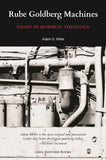 |
Rube Goldberg Machines: Essays in Mormon Theology |
 |
The Mormoness; or The Trials of Mary Maverick: A Narrative of Real Events |
 |
For Zion: A Mormon Theology of Hope |
 |
Who Are the Children of Lehi? DNA and the Book of Mormon |
 |
Fire on the Horizon: A Meditation on the Endowment and Love of Atonement |
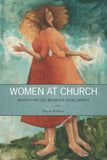 |
Women at Church: Magnifying LDS Women's Local Impact |
 |
Joseph Smith's Polygamy: Toward a Better Understanding |
 |
Knowing Brother Joseph Again: Perceptions and Perspectives |
 |
The End of the World, Plan B: A Guide for the Future |
 |
The Garden of Enid: Adventures of a Weird Mormon Girl, Part One |
 |
Perspectives on Mormon Theology: Apologetics |
Twelve Days of Kofford 2017 November 21 2017
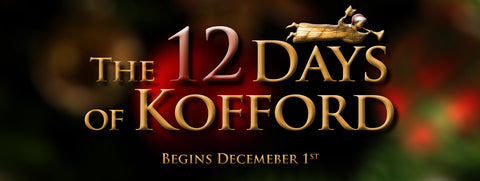
Greg Kofford Books is once again pleased to offer twelve days of discounted holiday shopping from our website!
HERE IS HOW IT WORKS: Every morning from Dec 1th through the 12th, we will be posting a DISCOUNT CODE on our Facebook or Twitter pages. Use this discount code on the corresponding day to receive 30% off select titles. The final day will be an e-book flash sale on Amazon.com.
To help you plan, here are the dates, titles, and sale prices we will be offering beginning Dec 1st. These sales are limited to available inventory. You must follow our Facebook or Twitter pages to get the discount code. Orders over $50 qualify for free shipping. Customers in the Wasatch Front area are welcome to pick orders up directly from our office in Sandy, UT.
Day 1 — Brant Gardner collection
 |
Second Witness, Vol 1: First Nephi $39.95 hardcover |
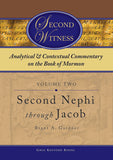 |
Second Witness, Vol 2: Second Nephi through Jacob $39.95 hardcover |
 |
Second Witness, Vol 3: Enos through Mosiah $39.95 hardcover |
 |
Second Witness, Vol 4: Alma $49.95 hardcover |
 |
Second Witness, Vol 5: Helaman through Nephi $39.95 hardcover |
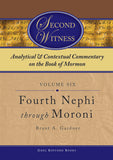 |
Second Witness, Vol 6: Fourth Nephi through Moroni $39.95 hardcover |
 |
The Gift and the Power: Translating the Book of Mormon $34.95 paperback |
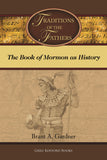 |
Traditions of the Fathers: The Book of Mormon as History $34.95 paperback |
 |
The Garden of Enid: Adventures of a Weird Mormon Girl $22.95 paperback |
 |
The Garden of Enid: Adventures of a Weird Mormon Girl $22.95 paperback |
Day 3 — The Mormon Image in Literature
 |
The Mormoness; Or, The Trials of Mary Maverick: $12.95 paperback |
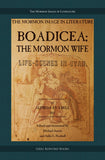 |
Boadicea; the Mormon Wife: Life Scens in Utah $15.95 paperback |
 |
Dime Novel Mormons $22.95 paperback |
 |
Women at Church: Magnifying LDS Women's Local Impact $21.95 paperback |
 |
Mormon Women Have Their Say: Essays from the Claremont Oral History Collection $31.95 paperback |
 |
Voices for Equality: Ordain Women and Resurgent Mormon Feminism $32.95 paperback |
 |
Joseph Smith's Polygamy, Vol 1: History $34.95 paperback |
 |
Joseph Smith's Polygamy, Vol 2: History $34.95 paperback |
 |
Joseph Smith's Polygamy, Vol 3: Theology $25.95 paperback |
 |
Joseph Smith's Polygamy: Toward a Better Understanding $19.95 paperback |
 |
Modern Polygamy and Mormon Fundamentalism: The Generations after the Manifesto $31.95 paperback |
 |
Mormon Polygamous Families: Life in the Principle $24.95 paperback |
 |
Prisoner for Polygamy: The Memoirs and Letters of Rudger Clawson at the Utah Territorial Penitentiary, 1884–87 $29.95 paperback |
 |
Who Are the Children of Lehi? DNA and the Book of Mormon $15.95 paperback |
 |
“Let the Earth Bring Forth”: Evolution and Scripture $15.95 paperback |
 |
Mormonism and Evolution: The Authoritative LDS Statements $15.95 paperback |
 |
Parallels and Convergences: Mormon Thought and Engineering Vision $24.95 paperback |
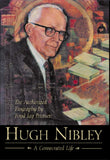 |
Hugh Nibley: A Consecrated Life $32.95 hardcover |
 |
“Swell Suffering”: A Biography of Maurine Whipple $31.95 paperback |
 |
William B. Smith: In the Shadow of a Prophet $39.95 paperback |
 |
LDS Biographical Encyclopedia, 4 Vols $259.95 paperback |
 |
The Man Behind the Discourse: A Biography of King Follett $29.95 paperback |
 |
Liberal Soul: Applying the Gospel of Jesus Christ in Politics $22.95 paperback |
 |
A Different God? Mitt Romney, the Religious Right, and the Mormon Question $24.95 paperback |
 |
Common Ground—Different Opinions: Latter-day Saints and Contemporary Issues $31.95 paperback |
 |
Even Unto Bloodshed: An LDS Perspective on War $29.95 paperback |
 |
War & Peace in Our Time: Mormon Perspectives $29.95 paperback |
 |
The End of the World, Plan B: A Guide for the Future $13.95 paperback |
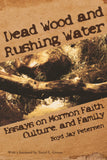 |
Dead Wood and Rushing Water: Essays on Mormon Faith, Culture, and Family $22.95 paperback |
 |
Mr. Mustard Plaster and Other Mormon Essays $20.95 paperback |
 |
Writing Ourselves: Essays on Creativity, Craft, and Mormonism $18.95 paperback |
 |
On the Road with Joseph Smith: An Author's Diary $14.95 paperback |
 |
Hearken O Ye People: The Historical Setting of Joseph Smith's Ohio Revelations $34.95 hardcover |
 |
Fire and Sword: A History of the Latter-day Saints in Northern Missouri, 1836–39 $36.95 hardcover |
 |
A House for the Most High: The Story of the Original Nauvoo Temple $29.95 paperback |
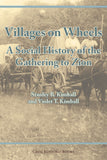 |
Villages on Wheels: A Social History of the Gathering to Zion $24.95 paperback |
 |
Mormonism in Transition: A History of the Latter-day Saints, 1890–1930, 3rd ed. $31.95 paperback |
Day 11 — International Mormonism
 |
Tiki and Temple: The Mormon Mission in New Zealans, 1854–1958 $29.95 paperback |
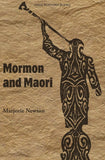 |
Mormon and Maori $24.95 paperback |
 |
The Trek East: Mormonism Meets Japan, 1901–1968 $39.95 paperback |
 |
From Above and Below: The Mormon Embrace of Revolution, 1840–1940 $34.95 paperback |
 |
The History of the Mormons in Argentina $24.95 paperback |
 |
For the Cause of Righteousness: A Global History of Blacks and Mormonism, 1830–2013 $32.95 paperback |
Free Scriptural Theology ebook for newsletter subscribers! October 30 2017
FREE EBOOK FOR NEWSLETTER SUBSCRIBERS
Perspectives on Mormon Theology: Scriptural Theology
Edited by James E. Faulconer and Joseph M. Spencer
Part of the Perspectives on Mormon Theology series
$24.95 FREE FOR OUR NEWSLETTER SUBSCRIBERS (Limited time)
Greg Kofford Books is pleased to offer for a limited time a free ebook version of Scriptural Theology, the first volume in the Perspectives on Mormon Theology series.
This volume is edited by James E. Faulconer and Joseph M. Spencer and seeks to offer a variety of perspectives regarding the nature and meaning of scripture for Latter-day Saints.
Book description:
The phrase “theology of scripture” can be understood in two distinct ways. First, theology of scripture would be reflection on the nature of scripture, asking questions about what it means for a person or a people to be oriented by a written text (rather than or in addition to an oral tradition or a ritual tradition). In this first sense, theology of scripture would form a relatively minor part of the broader theological project, since the nature of scripture is just one of many things on which theologians reflect. Second, theology of scripture would be theological reflection guided by scripture, asking questions of scriptural texts and allowing those texts to shape the direction the theologian’s thoughts pursue. In this second sense, theology of scripture would be less a part of the larger theological project than a way of doing theology, since whatever the theologian takes up reflectively, she investigates through the lens of scripture.
The essays making up this collection reflect attentiveness to both ways of understanding the phrase “theology of scripture.” Each essay takes up the relatively un-self-conscious work of reading a scriptural text but then—at some point or another—asks the self-conscious question of exactly what she or he is doing in the work of reading scripture. We have thus attempted in this book (1) to create a dialogue concerning what scripture is for Latter-day Saints, and (2) to focus that dialogue on concrete examples of Latter-day Saints reading actual scripture texts.
Contributors: James E. Faulconer, Joseph M. Spencer, Robert Couch, Adam S. Miller, Eric D. Huntsman, Claudia L. Bushman, Bruce W. Jorgensen, Jane Hafen, Jenny Webb, George B. Handley
Subscribe to our free newsletter by entering your email address above and receive instructions for downloading your free ebook.
Once you have signed up for our newsletter, you will recieve a welcome email that will provide instructions for downloading the ebook. Please read these instructions carefully. Check your junk folder if you do not see the welcome email.
Preview Perspectives on Mormon Theology: Apologetics June 23 2017

Perspectives on Mormon Theology:
Apologetics
This volume in the Perspectives on Mormon Theology series is an exploration of Mormon apologetics—or the defense of faith. Since its very beginning, various Latter-day Saints have sought to utilize evidence and reason to actively promote or defend beliefs and claims within the Mormon tradition. Mormon apologetics reached new levels of sophistication as believers trained in fields such as history, Near-Eastern languages and culture, and philosophy began to utilize their knowledge and skills to defend their beliefs.
The contributors to this volume seek to explore the textures and contours of apologetics from multiple perspectives, revealing deep theological and ideological fissures within the Mormon scholarly community concerning apologetics. However, in spite of pressing differences, what each author has in common is a passion for Mormonism and how it is presented and defended. This volume captures that reality and allows readers to encounter the terrain of Mormon apologetics at close range.
Q&A with Michael Austin and Ardis E. Parshall for Dime Novel Mormons March 13 2017
Order Your Copy Today
Q: For those who are not familiar with the Mormon Image in Literature series, can you explain its purpose and scope?
Mike: The Mormon Image in Literature series is a collaboration between an archival researcher and a literary critic that seeks to reprint the books that shaped the public perceptions of Mormonism in the nineteenth and early twentieth centuries. We will include books by Mormons and books about Mormons, but will focus on works that are hard to find and virtually unknown in the twenty-first century (as opposed to books like A Study in Scarlet and Riders of the Purple Sage, which have been continuously in print since their first publication). Along with faithful reproductions of the texts that scholars can use as primary research texts, each of these volumes contains an introduction and notes that set the works, and their authors, in a context that relates both to the way Mormons were understood by the author and the way the publishing industry in the United States was changing and demanding different kinds of works.
Ardis: These novels have next to nothing to teach me about Mormon history directly—they're too wildly inaccurate to be data sources. What they do give me is a chance to enter the Mormon past, in a sense. I read the words, knowing that readers of a hundred or more years ago read the same words. This is what people thought of us. If I were a missionary, this is what would be in the minds of people behind the doors I knocked on and in the minds of listeners at street meetings. If I were a Mormon mother sending my boy out as a missionary, this is what he would have to face, this is why I might be afraid for him, this is why I would be proud of him. This is what is behind the sneer on the conductor's face when he takes my ticket; this is what brings a curl to the lip of the government employee I appeal to for assistance. I know how I feel and what I think when I read news accounts today, or watch current TV, with caricatures of my behaviors and beliefs; when I read a sensational novel like those in our series, I know what it meant and felt like to a Mormon of the era to read these. We can dress up like pioneers and we can put on pageants about episodes in Mormon history—but that is superficial playacting. Watching the stories of these novels playing out in my imagination, just as they played out in the imaginations of their original readers, seems to me to be much closer to replicating historical reality.
Q: If you ran a bookstore, what section do you think these books would fit best in?
Ardis: Fiction, or historical fiction. I would keep the series together, rather than breaking it up by genre. (The genre mix will be more and more evident as the series continues.)
Mike: I would put them in the fiction section. Or in the Mormon Studies section if I owned one of the handful of bookstores in the world with a Mormon Studies section. And, like Ardis, I would keep the series together.
Q: Granted that the four titles collected in Dime Novel Mormons are not considered “highbrow” literature, can you give me a passage or scene that stood out to you in illustrating how public perception of Mormons may have been influenced by popular media tropes?
Ardis: When the villain Mercer Aldrich/John Leigh is introduced in Dolores, the Danite's Daughter, he is portrayed as handsome and intelligent and well-mannered and well-dressed—everything a woman might want, seemingly. But, of course, his civilized exterior is a mask hiding what he really is: a Mormon! a Danite! a threat! The fact that he can present himself so attractively only underscores the danger by warning readers that they cannot trust their judgment where a Mormon is concerned. That is a trope repeated in many of these novels, whenever a Mormon agent or missionary is among civilized society in the East or in England—it is only when he is among his own evil kind that the character's true nature shows itself.
A flesh-and-blood Mormon missionary who was kind and articulate had two strikes against him when the people he approached had that stock Mormon villain in mind. The more polite an elder was, the more effort he put into personal cleanliness, the more cheerful he was, the more carefully he presented his gospel message, the more at a disadvantage he could be: Isn't he just like the novels portray Mormons? Why, the nicer he is, the more rotten his heart must be, and the more clever he is at concealing his evil intent! There really isn't much a man can do to dispel the expectations of a public primed to expect the worst exactly when he is on his best behavior. In some cases, novelists who are most familiar with the Mormon message have also worked bits of standard missionary presentations into their stories, so that when an elder taught a bit of doctrine, it must have set off alarm bells in the minds of readers—here is a Mormon who not only acts the way these novels have depicted Mormons, he's actually saying what they warned me he would say! He must be just as bad as they say, too!
Mike: In the beginning of The Bradys Among the Mormons, Old King Brady, the nation's most accomplished private detective, is summoned to Washington, DC, to meet with a senator. Utah has become a state, and a candidate for its congressional seat has proposed to the senator's daughter. The senator will allow the marriage, but only if the Mormon, Joseph Smith Podmore, proves to be single and not secretly practicing polygamy.
This book came out right at the start of the Reed Smoot hearings, so it refers to a major public concern of the time. But it also shows a popular dime novel publisher trying to get as much life as possible out of the Mormon stereotypes that had existed for about thirty-five years in this kind of fiction. Brady will travel to Utah and discover a beautiful and modern Salt Lake City, but beneath that city, in a series of tunnels and caverns accessible only to Mormon elders, things go on just as they always have: polygamy, Danites, blood atonement, and all the rest.
I think that the new generation of dime novels that came out at the turn of the twentieth century created modern frames for the previous century's sensational stereotypes of Mormons, which had a lot to do with the perpetuation of those stereotypes and the assumption of many Americans that nothing really changed after the Manifesto.
Q: Was there anything in this collection of stories that surprised you in its depiction of Mormons, whether positive or negative? Anything that did not follow the standard villain tropes of secrecy, sexual deviancy, and violence?
Mike: In Frank Merriwell Among the Mormons, the author takes care to depict the standard Mormon villain—an aging patriarch trying to force a beautiful young maiden to marry him—as a member of a breakaway group of Mormons who are defying the Church. One of the heroes of the story is a young, monogamous, mainstream Mormon who wants to marry the beautiful young maiden in question. Frank Merriwell points out that the rising generation of Mormons are good citizens who are opposed to polygamy. In 1897, in a dime novel, this amounts to something like high praise.
Ardis: Hmm. This one is harder. Nothing comes to mind as surprising in the depiction of Mormons—the maidens are all fair and helpless; the Mormon villains are uniformly despicable; the Gentile heroes are unfailingly perfect specimens of stalwart American manhood.
One element that I hadn't been aware was so prevalent in these books is that the Mormon landscape is shown to be as malevolent as the Mormon soul. There is that vast underground network of dimly-lit caverns beneath Salt Lake City, all interconnected by natural tunnels, their walls sometimes dripping with lake water, their dead-ends dropping off suddenly into bottomless pits, their acoustics so perfect that our heroes can eavesdrop on secret Danite conversations without their own voices or footsteps betraying their presence to those Danites. The natural twists and turns in those tunnels and caverns somehow magically line up with the geometric regularity of the surface, so that the house of every prominent Mormon, built on Salt Lake's straight streets and right-angled blocks, has easy access to the subterranean world. Even the mountain hideouts have magical qualities. Danites, and eventually our heroes, can pass into and out of valleys by means of caves and secret passages.
I understand that readers of dime novels were probably not familiar with the legitimate writings of naturalists and army surveyors and the great Western explorers who report no trace of such geographic features, but it's still a bit surprising to me that readers of these stories could suspend their disbelief in such weird and abnormal landscapes in order to enter into the story. So, you have no faith in the basic humanity of tens of thousands of Mormons? Okay, but how does that translate into your lack of faith in the integrity of the natural world? That, in some ways, surprises me.
Q: This has already been addressed in passing, but I’d like to make it an explicit focus: How would you address readers who may be concerned that the books collected in this volume are often stigmatized as being “anti-Mormon” literature?
Mike: Oh, there is no question that these are anti-Mormons books—much more so than anything being produced today. But these portrayals are not unrelated to depictions of Mormons in some kinds of contemporary literature—the modern mystery novel, for example, where there are still Danites and blood atonement in some places. It is important for Latter-day Saints to understand the history of how we have been portrayed because that history has had consequences that we are still living with. It is always worth our time to learn the history of ideas and perceptions that are still with us today.
Ardis: They are anti-Mormon books—they falsify Mormon doctrine and character and intent; they shaped and promoted anti-Mormon feeling that extended from the novels into the real world and persists to the present. The question for me is, “Granted that these are anti-Mormon books, is there any good purpose in reprinting them, in reading them?” And I would answer that with a shouted “Yes!”
You won't learn anything about Mormonism here, but you will learn—in a sometimes delightful way, if you can turn off the natural tendency to take offense—quite a bit about the world that Mormons lived in or confronted whenever they looked outside Mormondom. You'll better understand where these warped views come from when you hear them repeated in some form today.
And I wouldn't hesitate to recommend that anybody, young or old, Mormon or not, read these stories, recognizing them for what they are. I agree with something Boyd K. Packer said in 1976 in a fireside address about the arts: “Teachers [readers in this case] would do well to learn the difference between studying some things, as compared to studying about them. There is a great difference.” Readers aren't reading anti-Mormonism in these novels to adopt that view themselves; they're reading about it, to understand and face it.
Q: Can you give us a glimpse as to what is yet in store for the Mormon Image in Literature series?
Mike: The next few volumes will focus on some of the literature produced by Mormons in the nineteenth century. We are working on a critical edition of Orson F. Whitney's Elias, for example, and on the collected works of Josephine Spencer, which have never been published before.
Ardis: I'm especially excited for two books written by Mormon women, which are as different as can be from the dime novels. The first is one or more volumes of the collected short stories of Josephine Spencer who saw well beyond her own time, and the other is the novel Venna Hastings by Julia Farr (the pseudonym of a woman I had been chasing through history before realizing she was a novelist). Both of these present a Mormon image that is positive, generally not preachy, and which Mormons at the turn of the twentieth century could read with interest—and maybe a sigh of relief that for once they could see themselves, not caricatures, on the printed page.
Along with these, you can look forward to mysteries, love stories, comedies, an outrageous depiction of missionaries that sparked a national investigation, high-minded or well-intentioned religious prose—just about every genre imaginable, except perhaps science fiction.
Order Your Copy Today
Q&A with Joseph Spencer for The Vision of All February 27 2017
Order Your Copy Today
Q:How and when did you begin to recognize the need for a different approach to studying the Isaiah sections in the Book of Mormon?
A: Well, I've always been overconfident about what I might be able to accomplish, so I first decided to tackle Isaiah in earnest when I was a teenager. Of course, I understood little, because I knew no real resources. I read carefully through the King James Version of the text, and I followed every footnote in the LDS edition. I spent a whole summer doing that, and I gained little more than some familiarity. I turned to Isaiah again shortly after my mission, when I was taking an introductory course on Hebrew. Studying straight from the Hebrew, using dictionaries and a few other tools, I felt like I came to understand the text a bit better, though I only worked at the time through about five chapters of Isaiah. At about the same time, I discovered a few other scholarly resources, especially the old FARMS volume Isaiah in the Book of Mormon. Those helped orient me in Isaiah's world a bit better, but I wasn't yet doing the sort of thing I've come to do now.
What changed things was twofold. First, my wife, Karen, and I were studying First Nephi, and we struck on some structural features of Nephi's record that make clear he means to emphasize Isaiah above all else in his record. (I've talked about these structural features in my books.) That spurred me to give closer attention to Nephi's treatment of Isaiah than I had before. Up to that point, I'd tried only to approach Isaiah on his own terms, using just a few scholarly resources. But stumbling onto the idea that I could see how Nephi reads Isaiah fired me up. And it got me more interested than before in understanding Isaiah on his own terms as well. I figured that understanding Isaiah himself would allow me to see how Nephi was using him in his own inventive ways. So I began, finally, to read the massive scholarly literature on Isaiah. Second, I was asked to teach early-morning seminary one year, while we were living in Oregon. The course of study was the Old Testament, and I asked for permission to focus the whole year just on Genesis, Job, and Isaiah. The bishop granted it, and so I worked with my students all the way through Isaiah for three months. In preparation for each class discussion, I did nothing but read commentaries, and then we came together and just wrestled with the text of Isaiah. By that point, I was finishing work on my first book, An Other Testament, which is largely about how the Book of Mormon handles Isaiah, so working carefully through every line of Isaiah with my students helped me to see even better how inventive and interesting Nephi is in his reading of Isaiah.
So I suppose it's been a circuitous path. The short answer is that it was only when I saw (a) that Nephi really means to privilege Isaiah and (b) that he deliberately reads Isaiah in his own way that my project began to take shape.
Q: In what ways does Nephi use Isaiah inventively? And how might his usage differ from scholarly consensus on Isaiah's original intent?
A: On my reading, Nephi explicitly tells his readers that he's reading Isaiah inventively. I believe this is what he tries to signal with the word "likening" (see, for example, 1 Ne. 19:23). He sees Isaiah's prophecies as having a meaning of their own, which we might call their immediate meaning. But then he sees the possibility of finding in Isaiah's prophecies a basic pattern that's replicated in Israel's history at times and in places where Isaiah wasn't himself focused. This is clearest when he applies prophecies from the Book of Isaiah, which in their biblical context are clearly about the return of exiled Jews from Babylon during the sixth century before Christ, to things he sees in vision regarding Lehi's descendants in modern times. He explicitly recognizes that passages from Isaiah have their natural fulfillment in the return of Jews from exile to the land of Judah, but then he suggests that the same passages can be likened to the return of latter-day Lamanites to the gospel of Christ their ancestors knew. He seems to see Isaiah as outlining patterns of how God works with Israel, whether in whole or in part, whether anciently or in modern times, again and again. And so he sees the possibility of adapting Isaiah texts to events that arguably outstrip the straightforward meaning of those texts. That is, I think, a rather responsible (because self-aware) form of inventive interpretation.
Of course, such an approach to the Book of Isaiah differs drastically from the kinds of approaches on offer in scholarly work on Isaiah today. For one, Nephi asks a rather different set of questions about Isaiah than do modern scholars. Academic work on Isaiah aims at reconstructing the historical origins and context of the Book of Isaiah, as well as the processes through which what originated with Isaiah came to have the shape we're familiar with from the Bible. Nephi isn't at all interested in these questions. He's apparently familiar with the basic, straightforward historical meaning of prophecies in the Book of Isaiah, but he moves pretty quickly beyond such meanings to explore other possible meanings and applications. Further, though, there are many other ways Nephi seems to differ from the conclusions of modern scholarly work on Isaiah. For instance, he clearly regards the whole of Isaiah 2–5 as a larger unit of text (as can be seen from connecting words and original chapter breaks in the Book of Mormon), but most interpreters today regard those chapters as divisible into at least two larger units (Isaiah 2–4 and Isaiah 5, for example). That only scratches the surface, of course. There are still larger issues of conflict between the way Nephi (or really, the Book of Mormon quite generally) handles Isaiah and the conclusions drawn by modern scholarship, but that would take some work to develop.
Q: How does The Vision of All negotiate this sometimes tense or conflicting terrain of modern scholarship and a more philosophically-grounded reading of Isaiah?
A: First and foremost, I think it's important just to make clear that there are various ways of reading Isaiah, and that Nephi acknowledges the uniqueness of his approach. We're far too prone as Latter-day Saints to think that there's one correct answer to questions about the meaning of a passage of scripture. We tend to think that we're done with a text once we know the "right" interpretation. And, in many ways, that's mirrored in modern scholarship, although modern scholars come up with a very different set of answers about the meanings of Isaiah's writings. The result is that too many academics think that average believers (Mormon or otherwise) simply get scripture wrong, and average believers return the compliment by claiming that scholars in turn get scripture wrong. What Nephi teaches us, I think, is that a given passage of scripture can have a variety of meanings and applications. Meaning is dynamic and contextualized by the act of reading. The result is that there's more a history of interpretation than there's a definite meaning for any particular passage or text. In Nephi's writings we can glimpse Lehi's approach to Isaiah, and it's quite different from Nephi's. And then he sets his own interpretations side by side with Jacob's, which are similar but far from identical. Even within just the sermon Nephi quotes from Jacob in 2 Nephi 6–10, we can track two rather different interpretations of one and the same passage (Isa. 49:22–23).
Just getting clear about all this can help us to feel a good deal more at home with Isaiah. Our job isn't to figure out the one true meaning of Isaiah, but to let Isaiah's words work on us. They provide us with patterns and images, relationships and themes. Our task is to dwell in the text and to let it begin to shape the way we see things. We won't be able to do this very well if we don't become familiar with the range of meanings the text can accommodate. So we ought to read Isaiah scholarship to become familiar with historical reconstructions of Isaiah's (apparent) original meaning. In fact, it's important to read some of this scholarship just to become familiar with the fact that no two interpreters agree on Isaiah's meaning. There are key passages in Isaiah that are literally interpreted in a dozen different ways by major modern interpreters. And then it'd be helpful for us if we became more familiar with the history of interpretation of Isaiah. How have Jews read Isaiah 53? Do different sorts of Christians read Isaiah 11 in different ways? How does a Seventh-day Adventist read Isaiah's references to the remnant by comparison with a mainline Protestant? And then how might we, as Latter-day Saints, find meaning in Isaiah? These are questions that go a good deal further than I ever do in The Vision of All, but I try in the book to open the way to these kinds of approaches, since I argue that Nephi does something like this in his own context.
Q: Can you give us a concrete example of a passage that Latter-day Saints may be prone to interpret a specific way, but which consideration of other interpretations, both within modern scholarship and other religious traditions, may be beneficial?
A: It's probably easiest here just to begin with an example that's decently known already. Most Latter-day Saints are familiar with those passages in Isaiah that play a prominent role in Handel's Messiah. "Behold, a virgin shall conceive, and bear a son, and shall call his name Immanuel" (Isa. 7:14). "For unto us a child is born, unto us a son is given: and the government shall be upon his shoulder: and his name shall be called Wonderful, Counsellor, The mighty God, The everlasting Father, The Prince of Peace" (Isa. 9:6). These kinds of passages are generally understood by average Mormons to be straightforward prophecies of Jesus Christ's birth. Modern scholars, however, generally read these passages in a fundamentally different way, say, as prophecies concerning events that were to happen within Isaiah's own lifetime. Some familiarity with the history of Jewish interpretation also helps to reveal how differently these texts can be read. Even many modern Christians, usually in mainline Protestantism, don't read these passages as direct references to Jesus Christ. It turns out that there are many different ways of making sense of these texts. They can be read as predictions of Jesus's birth. But they can also be read in many other ways, often informatively. Now, I don't mean to suggest that the other ways are necessarily the best ways. They may or may not be. But any reading of these passages will be stronger and more interesting if it acknowledges that it approaches the text from a certain perspective, from the perspective of a certain faith.
And really, that's what matters here, I think. When I say that we can benefit from familiarity with the ways that other traditions or modern scholars read certain passages of Isaiah, I mean that we can grow out of the naive assumption that there's only one possible way to understand a text (an assumption that too easily leads us to think that everyone who doesn't see things our way is simply stupid), and we can grow into a recognition that our readings are rooted in our own system of beliefs. I might put that another way: we can grow out of the naive idea that our interpretations of Isaiah are a matter of straightforward knowledge, and we can grow into the deeply mature realization that our interpretations of Isaiah are a matter of invested faith. Now, I suspect that most who become a bit more familiar with the variety of interpretations of Isaiah will come to interpret some of the texts in a new way. I certainly have as I've studied. And that's good, I think. But I think also that the best readers will also find reasons to defend uniquely Mormon interpretations of many passages of Isaiah, even while recognizing that those interpretations are rooted in a very specific perspective of faith. Why shouldn't we grow all the fonder of interpretations that grow directly out of our faith commitments, even as we recognize that the text can be read in many ways? I think we should, that we should feel free to defend an understanding of Isaiah that's informed by other traditions and scholarly work but that's simultaneously rooted in the Restoration.
Q: Switching topics, let's talk about the style of the book: The Vision of All is laid out as a series of twenty-five classroom-style lectures. Give us some insight into your decision to use this approach and if it had any precedent that inspired you.
A: A few things came together that led me to do the book this way. First, over the past few years, I'd begun to write some of my public presentations in this style, instead of always delivering a more formal or finished paper. I found I really enjoyed the writing process of producing something less formal, something where I don't have to tie up every loose thread and can focus on rhetorical delivery. Experimenting with that form of writing got me thinking. Second, I'd begun teaching courses on the Book of Mormon at Brigham Young University, and I'd found that students responded very well to my lectures on the Isaiah material. These weren't written up even in an informal style, but I began thinking that the sort of presentations I was making in the classroom with Isaiah might be more accessible to Latter-day Saints in general. Finally, I've been working steadily on Isaiah in the Book of Mormon for more than a decade now, and I began to think that I had too many ideas piled up in my head that really needed to be put in writing in some form or another, and writing up popular lectures would allow me to work quickly. These all came together at once, and so I began writing the book, one lecture a week.
In writing the book, I didn't try to follow any particular precedent. At the same time, I thought often while I was writing the book about a few similar projects. I thought sometimes about Hugh Nibley's four volumes of lectures on the Book of Mormon, which are literal transcripts of a four-semester honors course he taught on the Book of Mormon at BYU. I haven't read or watched all of those lectures, but certainly some of them, and I often thought about him providing a kind of example of something useful. Of course, my style in the lectures is quite different from Nibley's. Nibley largely began at one end of the Book of Mormon and worked his way to the other end, and he didn't always seem to have a sense of what he wished to accomplish in any given hour of lecture. I tried to impose a larger architectonic on the project, and I tried to assign myself several specific tasks in each lecture. But then, like Nibley, I let the time limits (or really, for me, word limits) decide where I had to stop. And so a lot of the lectures wrap up with overly quick summations of things. But that's meant to give readers a feel for how much more needs to be said than can be said about the subject of Isaiah in the Book of Mormon. I hope it's effective.
Q: Final question: Where do you hope your readers will go from here in their study of Isaiah?
A: I hope they'll start studying Isaiah on their own! Really, I hope the book itself makes clear that I want readers to take this just as a primer, a way of getting started. A recent review of The Vision of All criticized it because many of the lectures end with something like "Ack! We're out of time! We can't really tie up all these loose ends or get into everything we'd like!" The reviewer suggested that I was unwilling to write an extra thousand words to tie all the loose ends together, or that I was too lazy to work my way toward appropriate conclusions. But the fact is that I deliberately wrote the lectures this way. I want readers to feel how much work needs to be done, and I want them to feel responsible for that work. I want them to see how we might go about working on Isaiah in the Book of Mormon, but I want them to know that I can't and won't do all that work for them. Neither I nor anyone else is going to write the book that sorts out everything important that needs saying about Isaiah in the Book of Mormon. But there's a danger in writing scholarly books, a danger that readers might think that reading the scholarly book is all that's needed. So I wanted to write a book that does scholarly work and nonetheless makes perfectly clear that it just points in the right direction, rather than travels the whole length of the road to its ultimate destination.
I'd love to see dozens, hundreds, even thousands of Latter-day Saint readers of Isaiah, scholarly and not. We of all people ought to be invested in making sense of Isaiah's writings. Perhaps I could even wish for the emergence of a marked Latter-day Saint approach to Isaiah, one that becomes recognized as uniquely Mormon and worthy of interest from outsiders. I'd love to see that Latter-day Saint reading be profoundly responsible academically, fully informed about the best scholarly literature. But I'd love just as much to see that Latter-day Saint reading be deeply invested in the unique faith claims of the Restoration, deeply rooted in faithfulness to what Mormonism claims about the world. Our own unique scriptures ask us to take Isaiah seriously, but we tend to leave that task to scholars whose writings we can barely understand or to oddball amateurs who borrow their interpretations from the fundamentalist Christian tradition. What if we began to work on Isaiah in a way that didn't ultimately feel it necessary to conform to every scholarly conclusion (while nonetheless being aware of them) but also didn't look like wacky esoteric speculation? I think we could forge an interpretive tradition that could speak to the world.
Order Your Copy Today
On the twelfth day of Kofford: $1.99 flash sale on Kindle e-books! December 12 2016

On the twelfth day of Kofford, fill your digital stockings with our HUGE e-book promotion. Today only, each of the following titles are only $1.99 on Kindle! PLUS, to help you prepare for the upcoming D&C year in Gospel Doctrine class, we are offering B. H. Robert's classic six-volume A Comprehensive History of the Church on Kindle for only $3.99!
This flash sale ends at midnight tonight (Dec. 12th)
On the eleventh day of Kofford: 30% off Mormon Image in Literature titles! December 11 2016

Mormon Image in Literature titles are 30% off December 11th. These special prices are only available for one day, so don't wait!
Orders over $50 qualify for free shipping. Also, local Utah customers can opt to pick up their order directly from our office in Sandy (select this option under the shipping menu).
For more information about the Twelve Days of Kofford holiday sales, click here.
 |
The Mormoness; Or, The Trials Of Mary Maverick: A Narrative Of Real Events Retail: $12.95 |
 |
Boadicea; the Mormon Wife: Life Scenes in Utah Retail: $15.95 |
On the seventh day of Kofford: 30% off polygamy titles! December 07 2016

All polygamy titles are 30% off December 7th. These special prices are only available for one day, so don't wait!
Orders over $50 qualify for free shipping. Also, local Utah customers can opt to pick up their order directly from our office in Sandy (select this option under the shipping menu).
For more information about the Twelve Days of Kofford holiday sales, click here.
 |
Joseph Smith's Polygamy, Volume 1: History Now in paperback! Retail: $34.95 |
 |
Joseph Smith's Polygamy, Volume 2: History Now in paperback! Retail: $34.95 |
 |
Joseph Smith's Polygamy, Volume 3: Theology Now in paperback! Retail: $25.95 |
 |
Joseph Smith's Polygamy: Toward a Better Understanding Retail: $19.95 |
 |
Modern Polygamy and Mormon Fundamentalism: The Generations after the Manifesto Retail: $31.95 Best Book Award, John Whitmer Historical Association |
 |
Mormon Polygamous Families: Life in the Principle Retail: $24.95 |
 |
Prisoner for Polygamy: The Memoirs and Letters of Rudger Clawson at the Utah Territorial Penitentiary, 1884–87 Retail: $24.95 |
On the sixth day of Kofford: 30% off international Mormon studies titles! December 06 2016

All international Mormon studies titles are 30% off December 6th. These special prices are only available for one day, so don't wait!
Orders over $50 qualify for free shipping. Also, local Utah customers can opt to pick up their order directly from our office in Sandy (select this option under the shipping menu).
For more information about the Twelve Days of Kofford holiday sales, click here.
 |
The Trek East: Mormonism Meets Japan, 1901–1968 Retail: $39.95 |
 |
Mormon and Maori Retail: $24.95 Best International Book Award, Mormon History Association |
 |
Tiki and Temple: The Mormon Mission in New Zealand, 1854–1958 Retail: $29.95 Best International Book Award, Mormon History Association |
 |
For the Cause of Righteousness: A Global History of Blacks and Mormonism, 1830–2013 Retail: $32.95 Best Book Award, Mormon History Association |
 |
The History of the Mormons in Argentina Retail: $24.95 |
 |
From Above and Below: The Mormon Embrace of Revolution, 1840 – 1940 Retail: $34.95 Best International Book Award, Mormon History Association |
On the fifth day of Kofford: 30% off Contemporary Studies in Scripture titles! December 05 2016

All Contemporary Studies in Scripture titles are 30% off December 5th. These special prices are only available for one day, so don't wait!
Orders over $50 qualify for free shipping. Also, local Utah customers can opt to pick up their order directly from our office in Sandy (select this option under the shipping menu).
For more information about the Twelve Days of Kofford holiday sales, click here.
 |
Authoring the Old Testament, Volume 1: Geneses—Deuteronomy Retail: $26.95 |
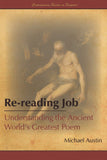 |
Re-reading Job: Understanding the World's Greatest Poem Retail: $20.95 |
 |
Search, Ponder, and Pray: A Guide to the Gospels Retail: $27.95 |
 |
Beholding the Tree of Life: A Rabbinic Approach to the Book of Mormon Retail: $21.95 |
 |
The Vision of All: Twenty-five Lectures on Isaiah in Nephi's Record Retail: $25.95 |
Twelve Days of Kofford Christmas Sale 2016 November 30 2016

MERRY CHRISTMAS FROM GREG KOFFORD BOOKS
Greg Kofford Books is pleased to announce our annual holiday sale on select popular titles beginning December 1st – December 12th.
Here's how it works: at the stroke of midnight each day, a new blog post will go live on our website listing that day's special offerings along with a discount code that you can enter at check-out to get the holiday price. It's that simple. We will also be posting the daily offering and discount code on our Facebook page at 7am.
*Orders over $50 qualify for free shipping (continental U.S. customers only). Local Utah customers can stop by our office in Sandy to pick up their orders as well. Holiday inventory on some titles may be limited, so be sure to take advantage of the daily sale early.*
To help you plan in advance, here are our scheduled sales:
Day 1 — Brant Gardner titles
 |
Second Witness: Analytical & Contextual Commentary on the Book of Mormon series
|
 |
The Gift and Power: Translating the Book of Mormon |
 |
Traditions of the Fathers: The Book of Mormon as History Best Religious Non-fiction Award, Association for Mormon Letters |
Day 2 — Adam Miller titles (essays in Mormon theology)
 |
Rube Goldberg Machines: Essays in Mormon Theology Retail $18.95 |
 |
Future Mormon: Essays in Mormon Theology Retail: $18.95 |
Day 3 — Personal Essays
 |
Dead Wood and Rushing Water: Essays on Mormon Faith, Culture, and Family Retail: $22.95 |
 |
Mr. Mustard Plaster and Other Mormon Essays by Mary Lithgoe Bradford Retail: $20.95 Sale price: $14.67 |
 |
Writing Ourselves: Essays on Creativity, Craft, and Mormonism Retail: $18.95 |
Day 4 — Blake T. Ostler titles
 |
Exploring Mormon Thought series by Blake T. Ostler 30% off each title |
 |
Fire on the Horizon: A Meditation on the Endowment and Love of Atonement Retail: $17.95 |
Day 5 — Contemporary Studies in Scripture
 |
Authoring the Old Testament: Genesis — Deuteronomy Retail: $26.95 |
 |
Re-reading Job: Understanding the Ancient World's Greatest Poem Retail: $20.95 |
 |
Search, Ponder, and Pray: A Guide to the Gospels Retail: $27.95 |
 |
Beholding the Tree of Life: A Rabbinic Approach to the Book of Mormon Retail: $21.95 |
 |
The Vision of All: Twenty-five Lectures on Isaiah in Nephi's Record Retail: $25.95 |
Day 6 — International Mormonism
 |
The Trek East: Mormonism Meets Japan, 1901–1968 Retail: $39.95 |
 |
Mormon and Maori Retail: $24.95 Best International Book Award, Mormon History Association |
 |
Tiki and Temple: The Mormon Mission in New Zealand, 1854–1958 Retail: $29.95 Best International Book Award, Mormon History Association |
 |
For the Cause of Righteousness: A Global History of Blacks and Mormonism, 1830–2013 Retail: $32.95 Best Book Award, Mormon History Association |
 |
The History of the Mormons in Argentina Retail: $24.95 |
 |
From Above and Below: The Mormon Embrace of Revolution, 1840 – 1940 Retail: $34.95 Best International Book Award, Mormon History Association |
Day 7 — Polygamy titles
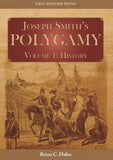 |
Joseph Smith's Polygamy: History and Theology Now in paperback! 30% off each title |
 |
Joseph Smith's Polygamy: Toward a Better Understanding Retail: $19.95 |
 |
Modern Polygamy and Mormon Fundamentalism: The Generations after the Manifesto Retail: $31.95 Best Book Award, John Whitmer Historical Association |
 |
Mormon Polygamous Families: Life in the Principle Retail: $24.95 |
 |
Prisoner for Polygamy: The Memoirs and Letters of Rudger Clawson at the Utah Territorial Penitentiary, 1884–87 Retail: $29.95 |
Day 8 — Contemporary Issues
 |
Women at Church: Magnifying LDS Women's Local Impact Retail: $21.95 |
 |
Common Ground—Different Opinions: Latter-day Saints and Contemporary Issues Retail: $31.95 |
 |
The Liberal Soul: Applying the Gospel of Jesus Christ in Politics Retail: $22.95 |
 |
Voices for Equality: Ordain Women and Resurgent Mormon Feminism Retail: $32.95 |
Day 9 — Biography
 |
Hugh Nibley: A Consecrated Life Retail: $32.95 Best Biography Award, Mormon History Association |
 |
“Swell Suffering”: A Biography of Maurine Whipple Retail: $31.95 Best Biography Award, Mormon History Association |
 |
William B. Smith: In the Shadow of a Prophet Retail: $39.95 Best Biography Award, John Whitmer Historical Association |
 |
The Man Behind the Discourse: A Biography of King Follett Retail: $29.95 |
Day 10 — War and Peace
 |
War & Peace in Our Time: Mormon Perspectives Retail: $29.95 |
 |
Even unto Bloodshed: An LDS Perspective on War Retail: $29.95 |
 |
The End of the World, Plan B: A Guide for the Future Retail: $13.95 |
 |
Saints of Valor: Mormon Medal of Honor Recipients, Updated 2nd Edition Retail: $31.95 |
Day 11 — Mormon Image in Literature
 |
The Mormoness; Or, The Trials Of Mary Maverick: A Narrative Of Real Events Retail: $12.95 |
 |
Boadicea; the Mormon Wife: Life Scenes in Utah Retail: $15.95 |
Day 12 — Ebook Flash Sale — $1.99 for select titles
To be announced. Stay tuned!
Q&A with Julie M. Smith for As Iron Sharpens Iron July 26 2016

Pre-order Your Copy Today
Q: Give us a little background into how this project started.
A: I read a review copy of Matthew Richard Schlimm's This Strange and Sacred Scripture: Wrestling with the Old Testament and Its Oddities. Its aim is to help the modern reader figure out what to do when a work they regard as sacred seems to promote genocide, slavery, etc. There is a brief section in the book—just a page or two—where he presents a fictitious dialogue between Ruth and Ezra. Ezra is the one who commands the Israelites to divorce their foreign wives. Ruth, of course, is a foreign wife. Now, in real life, they never had this conversation—they didn't even live at the same time. But Schlimm has created this conversation that shows them exploring their positions on what we would call interfaith marriage. It is civil, but neither concedes. They explore their disagreement. This dialogue stuck in my mind. A few weeks later, I was still thinking about it. I wished that I could read an entire book of dialogues like that. And since I know some pretty clever people, I decided to ask them to write a book like that for me.
Q: Why is it important for readers of scriptures to understand that there are various, sometimes even contesting, views within the scriptures?
A: Usually, one of two things happens: we either don't read closely enough to notice that there are differences, or, as soon as we notice the differences, we work as hard and as quickly as we can to come up with some theory that makes the difference disappear. But what if the contesting views are supposed to be there? What if they are a feature and not a bug? This book is an exercise in exploring those differences. If they are there, they are a feature of the scriptures, and we might just be able to learn something from them.
Q: Why did you choose to portray these different views within scriptures as fictionalized dialogues among scriptural figures? Does this approach tie into a more anciently-practiced approach to scriptural hermeneutics?
A: In some ways it is similar to the Jewish practice of midrash because it is creative and because it goes beyond the text itself. But whereas midrash often tries to fill “gaps” or solve problems, it was important to me that we specifically not do that, but rather try to stay true to the text itself. As far as using fictionalized dialogues, it seemed to be a reader-friendly manner of presenting the diverging opinions. It also models civil dialogue—something I think this current moment is lacking and might benefit from seeing modeled.
Q: What are some of the larger themes within scripture that are particularly relevant to a modern audience?
A: Can I say “all of them”? I'm not sure there is much that they wrestled with that we don't, at least in some iteration. For example, my dialogue concerns Mark and Luke discussing (or, as Ben Peters described it, “mansplaining”) women's proper roles. Luke's viewpoint is that we honor women by honoring what women have traditionally done; Mark's is that we honor women by removing restrictions from their behavior. But is Mark's view requiring women to act like men in order to be worthy of honor? Is Luke's view too limiting of what women can do? It's 2,000 years later and we are still having precisely the same conversation about women's roles. This is true for all of the dialogues.
Q: Can you provide an example or two of topics that casual readers may assume unity among Biblical writers that, upon closer scrutiny, may actually show tension?
A: Nicholas Frederick has a great piece contrasting the different views about the nature and divinity of Jesus within the New Testament. Heather Hardy's piece highlighting the different ways that Joseph (in the Old Testament) and Nephi think about rivalry and reconciliation with their siblings is just fantastic. Ronan James Head writes about contrasting views of Satan.
Q: How does understanding the different views and ideas presented in scripture help us to have a deeper, more rewarding experience in reading them?
A:Well, I find the places of tension to be the most productive locations for really pondering because they raise such important questions about how to resolve those tensions. I'm a big proponent of the idea that when you are pondering and wrestling, you are creating space for the Spirit to speak as you let the questions tumble around.
Pre-order your copy today.
New from The Mormon Image in Literature Series: Boadicea — now available! July 14 2016

NOW AVAILABLE from The Mormon Image in Literature series:
Boadicia; The Mormon Wife: Life-Scenes in Utah
by Alfreda Eva Bell
Edited and annottated by Michael Austin and Ardis E. Parshall
About the series:
The Mormon Image in Literature reprints important literary works by and about Mormons—from the sensational anti-polygamy books and dime novels of the Civil War era to the first attempts of Mormon writers to craft a regional literature in their Great Basin kingdom. Each volume contains a critical introduction, helpful annotations, and multiple appendices that enlighten and enliven the text. These volumes have been designed for both Mormon and non-Mormon readers who want to understand the cultural importance of Mormonism during the first Latter-day Saint century.
From series co-editer, Michael Austin:
“Much of this work will be just as interesting to historians as to scholars of literature. In fact, some of the work with the least literary merit has the greatest historical interest. Boadicea: The Mormon Wife, which will be the second volume in the series, will probably never be accused of literary greatness. But it has been written about by some of the top figures in Mormon History: Leonard Arrington, Terryl Givens, Sarah Barringer Gordon, Paul W. Reeve.
The literature of the 19th century had very little subtlety when it came to portraying Mormons. The overwhelming majority of volumes featured Mormon elders living in harems and forming Danite bands to hunt down and kill dissenters. And this was not just in the tawdry literature. Both Robert Louis Stevenson and Arthur Conan Doyle wrote novels that portrayed Mormons in these ways.”
Read the complete Q&A here.

Boadicea; the Mormon Wife: Life-Scenes in Utah
Part of The Mormon Image in Literature series
by Alfreda Eva Bell
Edited by Michael Austin and Ardis E. Parshall
151 Pages
ISBN 978-1-58958-566-9
$15.95 (paperback)
Also available in ebook
First published in 1855, Boadicea; the Mormon Wife belongs to a sub-genre of crime fiction that flourished in the Eastern United States during the 1850s. Boadicea has become increasingly important to scholars of Mormonism because it gives us a glimpse of the Mormon image in literature immediately after the Church’s public acknowledgement of plural marriage. Over the next half century, this image would be sharpened and refined by writers with different rhetorical goals: to end polygamy, to attack Mormon theology, or just to tell a highly entertaining adventure story. In Boadicea, though, we see these tropes in their infancy, through a prolific author working at break-neck speed to imagine the lives of a strange people for readers willing to pay the “extremely low price of 15 cents” for the privilege of being amazed by stories of polygyny and polyandry, along with generous helpings of adultery, seduction, kidnapping, and no fewer than fourteen untimely but spectacular deaths: people are shot, stabbed, bludgeoned, poisoned, hanged, strangled, and drowned. No other novel of the nineteenth century comes anywhere near Boadicea in portraying Mormon society as violent, chaotic, and dysfunctional.
Preview Boadicea
About the series editors:
Michael Austin is the author or editor of seven books and more than 50 articles, book chapters, and reviews, including Re-reading Job: Understanding the Ancient World’s Greatest Poem. He is currently the Provost and Vice President of Academic Affairs at Newman University in Wichita, Kansas.
Ardis E. Parshall is a historian, freelance researcher specializing in Mormon history, and author. She co-edited with Paul Reeve Mormonism: A Historical Encyclopedia and is currently writing She Shall Be an Ensign, a history of the LDS Church told through the lives of Mormon women. She blogs at Keepapitchinin.
- Previous
- Page 2 of 2





